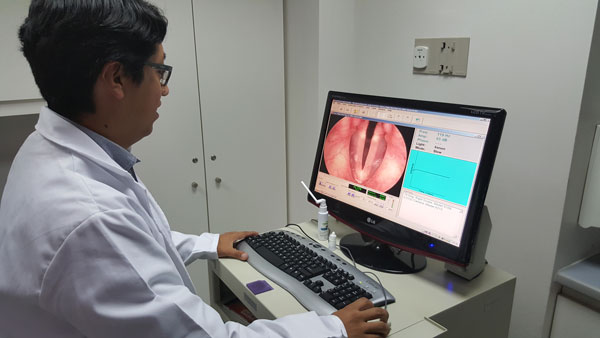Geraniums are the stars of flower gardening. They bring vibrant colors and sweet scents to any outdoor space. These plants thrive in gardens, hanging baskets, and window boxes.
Geraniums are perfect for both new and experienced gardeners. Their cheerful blooms and easy-care nature make them a popular choice. These flowers offer endless possibilities for your outdoor areas.
Geraniums come in a rainbow of hues. You can find classic red, soft pink, and even striking bicolor varieties. These beautiful blooms can suit any taste or garden style.
Understanding Geranium Varieties and Species
Geraniums are beloved garden plants with vibrant blooms and aromatic foliage. They include true geraniums and pelargoniums, offering diverse options for gardeners. These plants come in annual and perennial varieties.
True Geraniums vs. Pelargoniums
True geraniums, or cranesbills, are hardy perennials that thrive in cooler climates. Pelargoniums, often called "geraniums," are tender perennials or annuals with showy flowers. Both types beautify gardens but need different care.
Popular Cultivars for Home Gardens
Gardeners can choose from many geranium varieties:
- Zonal pelargoniums: Known for their colorful leaf markings
- Ivy-leaved pelargoniums: Perfect for hanging baskets
- Regal pelargoniums: Prized for their large, showy blooms
- Hardy geraniums: Excellent ground covers for shaded areas
Scented Geranium Varieties
Scented geraniums are a treat for the senses. These pelargoniums produce fragrances like rose, lemon, mint, and chocolate. They're great for sensory gardens, potpourris, and cooking.
Popular scented varieties include rose, lemon, and peppermint geraniums. Geraniums offer options for both seasonal color and long-term garden structure. Try different types to create a diverse, fragrant garden display.
Perfect Growing Conditions for Thriving Geraniums
Geraniums thrive in conditions that mimic their natural habitat. They prefer well-draining soil rich in organic matter. A mix of garden soil, peat moss, and perlite creates an ideal growing medium.
Sunlight is crucial for healthy geraniums. They need at least 6 hours of direct sunlight daily. In hotter climates, afternoon shade can protect them from scorching.
Geraniums favor moderate warmth. They grow best in daytime temperatures between 70-75°F and nighttime temperatures around 60°F. These plants can handle brief cold spells but struggle in extreme heat.
Geraniums are drought-tolerant, making them great for water-conscious gardeners. They prefer soil to dry slightly between waterings. This makes them ideal for regions with water restrictions.
- Well-draining soil
- Full sun to partial shade
- Moderate temperatures
- Infrequent, deep watering
Adapting care to your local climate is important. In humid areas, space plants for air circulation. This helps prevent fungal issues. In dry regions, mulch around plants to keep moisture in.
With the right conditions, your geraniums will bloom beautifully. They'll reward you with colorful flowers throughout the growing season.
Planting and Propagation Techniques
Geraniums are perfect for flower gardening enthusiasts. They offer various ways to grow and expand your collection. Let's explore how to cultivate these beautiful blooms.
Starting from Seeds
Start geranium seeds indoors 8-10 weeks before the last frost. Use sterile seed-starting mix and keep soil moist. Germination usually happens in 7-14 days.
Once seedlings have true leaves, move them to individual pots. This gives them room to grow strong and healthy.
Propagating from Cuttings
Take 4-inch cuttings from healthy geraniums in late summer. Remove lower leaves and dip the cut end in rooting hormone. Plant in well-draining potting mix.
Keep the soil moist and place in indirect light. Roots should form within 3-4 weeks. This method is great for multiplying your favorite plants.
Transplanting Tips
When moving geraniums to their permanent spot, follow these steps:
- Choose a spot with well-draining soil and full sun
- Dig a hole twice the size of the root ball
- Gently remove the plant from its container
- Place the geranium in the hole at the same depth it was growing
- Fill with soil and water thoroughly
These techniques will help you create a stunning geranium display. With practice, you'll become an expert at growing these lovely flowers.
Essential Care and Maintenance Tips
Geraniums need consistent care to stay healthy and bloom. These drought-tolerant plants thrive in containers. They require specific attention to flourish.
Watering Requirements
Let geranium soil dry between waterings. For containers, water when the top inch feels dry. In-ground plants need deep watering once a week.
Be careful not to overwater. Too much water can cause root rot.
Fertilization Schedule
Feed geraniums every 4-6 weeks during growth. Use a balanced, water-soluble fertilizer at half strength. For potted plants, choose a container-specific fertilizer.
Pruning and Deadheading
Prune regularly for bushy growth and more flowers. Pinch young plant tips to encourage branching. Remove spent blooms to stimulate new flower growth.
In late summer, trim back by one-third. This will refresh the plant for fall blooming.
- Check soil moisture regularly
- Fertilize during active growth
- Prune to shape and promote flowering
- Remove dead or yellowing leaves
Follow these tips for vibrant geranium blooms all season. These versatile plants add color to gardens and containers. They'll charm any outdoor space.
Container Gardening with Geraniums
Geraniums excel in container gardening, offering vibrant blooms for various spaces. They thrive in different container types, from classic terracotta pots to modern planters. Proper drainage is crucial to prevent waterlogged roots Barwinek.
For stunning geranium displays, consider these tips:
- Select containers at least 10 inches wide and deep
- Use a well-draining potting mix enriched with compost
- Plant geraniums 8-10 inches apart for lush growth
- Combine upright and trailing varieties for visual interest
Hanging baskets showcase geraniums beautifully, creating eye-catching suspended gardens. Ivy geraniums work well in hanging baskets, cascading over the sides. Use a lightweight potting mix for hanging baskets.
Choose a basket at least 12 inches in diameter for your geraniums. This size provides ample space for growth and visual impact.
Pair geraniums with complementary plants like lobelia, petunias, or sweet alyssum. This blend creates a mix of textures and colors. Your container garden will reach new levels of beauty.
Common Pests and Disease Management
Healthy geraniums require effective problem-solving skills. This applies to outdoor and indoor plants, including pelargoniums. Let's explore ways to identify, treat, and prevent common issues.
Identifying Common Problems
Watch for these signs of trouble in your geraniums:
- Yellowing leaves
- Spotted or wilting foliage
- Stunted growth
- Visible pests on stems or leaves
Natural Treatment Methods
Try these eco-friendly solutions for common geranium ailments:
- Use neem oil spray for aphids and whiteflies
- Remove infected parts to control fungal diseases
- Apply a mixture of baking soda and water for powdery mildew
Preventive Care Measures
Maintain your geraniums' health with these practices:
- Ensure proper air circulation around plants
- Water at the base to keep foliage dry
- Clean tools between uses to prevent disease spread
Regularly check indoor plants, including pelargoniums, for issues. Good airflow and proper watering help prevent problems in contained spaces. Stay alert and use these tips for thriving geraniums all year.
Indoor Growing and Overwintering
Geraniums make great indoor plants, adding color to your home all year. These perennials can thrive indoors with proper care, even during cold winters.
Light Requirements
Indoor geraniums need lots of light to grow well. Place them near south-facing windows for the best sunlight. If natural light is scarce, use grow lights to help.
Aim for 6-8 hours of bright light daily. This keeps your geraniums healthy and flowering.
Temperature Control
Geraniums like cool to moderate indoor temperatures. Keep them in areas between 60-75°F during the day and slightly cooler at night.
Avoid placing geraniums near drafty windows or heating vents. These can stress the plants.
Winter Care Tips
Overwintering geraniums needs some changes to their care:
- Reduce watering frequency, allowing soil to dry between waterings
- Stop fertilizing until spring
- Trim back foliage by about one-third to encourage compact growth
- Monitor for pests, which can be more problematic in indoor environments
Follow these tips to enjoy beautiful indoor geraniums all winter. They'll be ready to thrive when spring comes.
Companion Planting and Garden Design
Geraniums are versatile stars in flower gardening. They shine in formal beds, cottage gardens, and seasonal displays. Consider pairing geraniums with plants that have similar needs and complementary colors.
Try planting geraniums alongside lavender, salvia, or petunias. These combinations create eye-catching contrasts in color and texture. In containers, geraniums work well with trailing plants like lobelia or sweet alyssum.
Geraniums offer endless possibilities for seasonal color schemes. Use them to create bold focal points in your garden. They can also fill gaps between perennials effectively.
Geraniums adapt to fit various garden sizes and styles. Their diverse colors and forms make them perfect for unique garden spaces. You can enjoy their beauty throughout the growing season.





